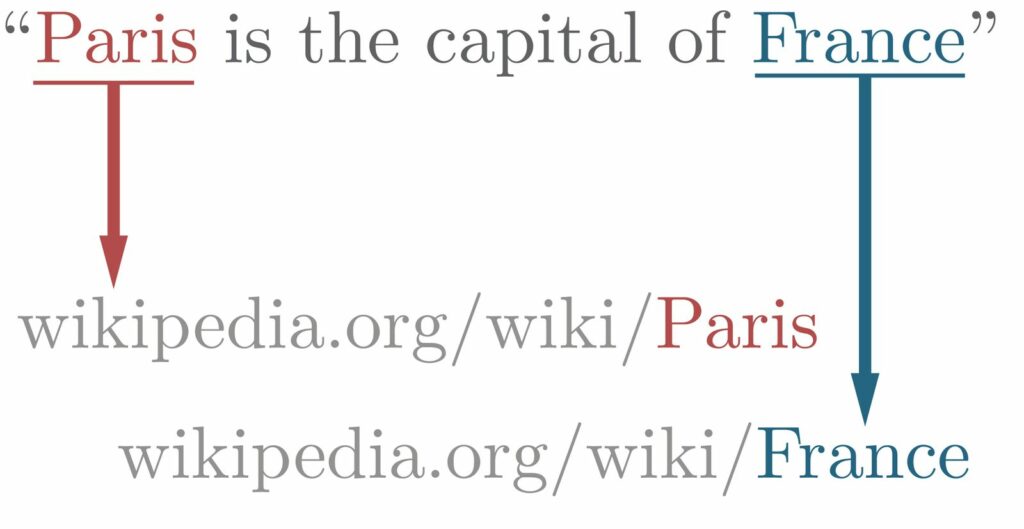TL;DR – Entity linking (EL) is the process of linking entity mentions appearing in web text with their corresponding entities in a knowledge base.

Table of Contents
Entity Linking in Natural Language Processing
In the expansive world of Natural Language Processing (NLP), understanding context is crucial, and one method that has risen to prominence in achieving this is Entity Linking (EL).
Introduction to Entity Linking
Entity Linking, often intertwined with named entity recognition (NER), is the process of associating mentions of named entities in text to corresponding entities in a knowledge base. Imagine reading a document mentioning “Apple”. Without context, this could refer to the fruit or the tech giant. EL provides that context, confirming if “Apple” corresponds to the Wikipedia page for the fruit or the company.
Why is Entity Linking Important?
- Information Extraction: EL aids in extracting structured insights from unstructured data, enhancing tasks like data mining.
- Knowledge Base Population: It enriches knowledge bases by linking new entity mentions from texts.
- Question Answering: For AI models to provide accurate answers, understanding the context through EL is crucial.
- Semantic Search: Enhancing search results by understanding the specific entities present in documents.
Techniques and Methodologies
Several algorithms and methods drive the state-of-the-art performance in entity linking:
- Candidate Generation: For each entity mention, potential corresponding entities (candidate entities) are retrieved from the knowledge base.
- Disambiguation: Using machine learning or deep learning, the system determines the most likely entity from the candidate list. Techniques like embeddings, where words are mapped to vectors, have been instrumental.
- Collective Entity Linking: This considers the context of other entity mentions in the document to disambiguate individual mentions, leveraging the semantic relationships between entities.
Databases and knowledge bases like Wikipedia, DBpedia, YAGO, and ontologies have been pivotal in this process. Tools like AIDA and datasets from TAC and CoNLL provide benchmarks for training and evaluating EL systems.
Challenges
- Ambiguity: Same entity mentions might refer to different entities based on context.
- Scale: With vast knowledge bases like Wikipedia, determining the right entity becomes computationally challenging.
- Multilingual Content: Entities in non-English content might not have direct equivalents in English-centric knowledge bases.
The Pioneers and Progress
Silviu Cucerzan and Xiao Ling, among others, have made significant contributions in this domain. The association for computational linguistics (ACL), through conferences like EMNLP, NAACL, and COLING, has facilitated discussions and innovations in EL. Publications in IEEE and ACM journals have furthered research, with applications ranging from tweets analysis to large-scale information retrieval.
Conclusion
Entity Linking, bridging the gap between text and knowledge, is a cornerstone in modern NLP. With advancements in algorithms and the growth of knowledge graphs, the precision of EL systems will only rise, paving the way for more context-aware and intelligent AI systems in fields ranging from computer science to information retrieval and beyond.
FAQ
What is Entity Linking in SEO?
Published on: 2022-03-28
Updated on: 2023-10-09